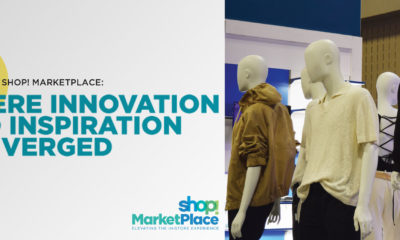NXTLVL Experience Design
Episode 52: Refik Anadol
Making the Invisible Visible: AI, Architecture and Data Paintings with Refik Anadol, Director, Refik Anadol Studio; Lecturer, UCLA
Published
1 year agoon
By
David KepronEPISODE SUMMARY
In the world of data visualization artists, Refik Anadol ranks among the world’s most renowned. Bringing together media arts, neuroscience, architecture and machine intelligence, Anadol is changing the way we will experience place. From creating “data paintings” that hang in galleries to working on an urban scale, his work is re-contextualizing our built environment towards a digitally mediated culture. Anadol is likened to the Renaissance masters but in his case he plunges his brush into the conscience of the machine and paints with data, algorithms and light as a pigment.
EPISODE NOTES
ABOUT REFIK ANADOL:
LinkedIn Profile: https://www.linkedin.com/in/refikanadol/
LinkedIn page for Refik Anadol Studio: https://www.linkedin.com/company/refik-anadol-studio/
Website: https://refikanadol.com
Youtube Videos:
AdvertisementDisney Concert Hall: https://www.youtube.com/watch?v=FKfCrChDWpY
Melting Memories: https://refikanadol.com/works/melting-memories/
Machine Halucinations: https://www.youtube.com/watch?v=OviC5RwpnvA
TED TALK: https://www.youtube.com/watch?v=UxQDG6WQT5s
SHOW INTRO:
Number of years ago, in 2014, when I was writing my book Retail (r)Evolution, I was looking at the interrelationship between brands, they’re physical expression, cognitive science neuroscience and emerging digital technologies.
I was thinking a lot about the emergence of a new cohort of experience seeking consumers and their proclivity to use their digital devices not just us communication devices but as vehicles for self-expression through the use of media making.
AdvertisementGoing out and capturing images and posting to Instagram or social media platforms wasn’t just about pushing visual content into the world it was about storytelling, media making and creating narratives of one’s life experience in a very different and hugely impactful way.
I was beginning to see that young emerging consumers would be extremely savvy in terms of marketing because pushing content into the digisphere required them to understand what their individual markets were interested in, in terms of content, their ability to stay in front of their viewers was a large part of their success.
True, I also felt that a lot of this was an other-rated sense of validation that was driving a deep emotional connection to a sense of well-being and a sense of self in community but it nevertheless suggested that making stories and rewriting narratives of experience was becoming common place and was influencing expectations about how brand engagements should unfold.
Brands could no longer just assume that they would give their customers certain services or products and that they would be acceptable and if they didn’t like them this season, well, they could come back and next season.
But that the ability to remain relevant was tied to the idea of engaging guests in the creation of part of the narrative, something that they could own, something that gave them a sense of agency and connection to the brand in a very different way.
I also began to think that what this likely meant was that, as we moved to a world of artificial intelligence and using data to help us understand decision making in in the shopping aisle or online, that it would likely also mean that places that we inhabited might also change based on the interchange of data between my personal devices and a set of algorithms that drove brand experience.
AdvertisementI then began to think about the opportunities here of a space that could change in real time to accommodate my individual needs perhaps even from data that was pulled from my smart devices that were reading body temperature, skin conductance, heart rate, breathing rate and even neural activity that was indicating maybe what parts of my brain were being more activated than others and how that might change the environment to align the physical space with my mind body space.
This then became a platform for me thinking about a future state where brand experience places were more like brand performance places
where the interaction between the performer in this narrative and the stage set on which the story unfolded were intimately tied together and transformed in ways that adapted to different need-states and expectations driven from both personal digital footprints, the places and manner that we used our digital devices and our bio data pulled from our personal digital device connected to our person.
There were certainly at certain some points where I believed that all I might need as an architect was it data set, an algorithm, a projection system and a white box. And into that white box we could project data images that were representation of my inner desires or inner mind body state.
Then along comes an exposure to something that was called a data sculpture in the Sales Force headquarters in San Francisco.
The extraordinary digital image moved across a large part of a wall surface was pulling data from the environment and changing in response to the weather, traffic flows to public sentiment about certain things.
This became my first exposure to the fact that someone out there was actually doing this thing I had imagined would be possible.
Subsequent to that, I stumbled across an exhibit called “Melting Memories” where Refik Anadol ,a Turkish data visualization artist, had been able to capture brain data of people’s memories and made the invisible visible.
Refik Anadol’s data paintings, or data sculptures, were enormous high-definition fluid moving images that were like watching a campfire – ever changing and captivating.
I found them captivating more so because they were a physicalization of somebody’s most private moments – a memory.
This for me was a complete game changer.
Finally, the ideas that I had begun to think about but knew I was incapable of actually creating on my own were being done.
An artist in our midst who was tying together artificial intelligence, art and neuroscience was beginning to reshape the way we would come to experience public spaces and art itself.
Refik Anadol is an extraordinary example of a game changing artist who brings together these three core components in reshaping the world we live in.
Using architecture as a canvas, his data sculptures recontextualize the built work, or the inner life of significant cultural buildings, and externalizes them as a painting on the exterior skin giving these public buildings a new level of appreciation, perhaps, for an emerging cohort of digitally oriented consumers.
One of the main premises of my book Retail (r)Evolution was to try to get people who were creating brand experience places a little more connected to what happens at a brain-body level in terms of their experience of environments.
My whole premise was that if you knew a little bit more about how your brain actually worked you might not create some of the things that you believe are relevant which are completely off of the awareness radar and probably don’t have the impact that you hope to have with people who are experience the place.
If we only understood a little bit what goes on inside your head we might be able to create more relevant and meaningful experiences for people because so much of what we experience is driven by our neurophysiology and our interpersonal neurobiology.
As I learned more about the work of Refik Anadol, I was intrigued and delighted by his thinking of what he’s doing today and his relationship to early Renaissance art where, at that time artists were afforded materials by their patrons and they would use technologies to create advances in artistic expression.
In Anadol’s world, his connection to massive data sets were akin to having the raw materials for creating great new digital pieces of artwork.
I once heard him explain that what he was effectively doing was taking his paintbrush and plunging it into the consciousness of the machine and painting with those algorithms and data sets.
What is even more fascinating about his work is the use of light as a building material, or maybe as a pigment, which he wields to create both paintings that may hung in a gallery as well as wrapping significant pieces of architecture like the Frank Gehry Disney Concert Hall for the Los Angeles Philharmonic in the center of downtown LA.
The interesting thing about using existing architecture as a canvas onto which light as a substance is painted and moving pictures generated from massive data sets that are the memory of the building is that in a way it recontextualizes these buildings that are, generally speaking, time stamped,
meaning they’re built in a period of time and represent a certain period of culture into which they were born. This work brings those buildings forward into a contemporary world of fluid experience where time and space seemed to collapse as we move rapidly from one significant change in our digitally mediated environment to the next.
Refik Anadol (b. 1985, Istanbul, Turkey) is now an internationally renowned media artist, director, and pioneer in the aesthetics of machine intelligence.
He currently resides in Los Angeles, California, where he owns and operates Refik Anadol Studio and RAS LAB, the Studio’s research practice centered around discovering and developing trailblazing approaches to data narratives.
Anadol also teaches at UCLA’s Department of Design Media Arts from which he obtained his Master of Fine Arts.
Anadol’s body of work addresses the challenges, and the possibilities, that ubiquitous computing has imposed on humanity, and what it means to be a human in the age of AI.
He explores how the perception and experience of time and space are radically changing now that machines dominate our everyday lives.
Anadol is intrigued by the ways in which the digital age and machine intelligence allow for a new aesthetic technique to create enriched immersive environments that offer a dynamic perception of space.
In some cases, entire buildings come to life, floors, walls, ceilings disappear into Infinity, breathtaking aesthetics take shape from large swaths of data, and what was once invisible to the human eye becomes visible, offering the audience a new perspective on and narrative of their worlds.
Refik Anadol’s global projects have received a number of awards and prizes.
His studio comprises designers, architects, data scientists and researchers from diverse professional and personal backgrounds, embracing principles of inclusion and equity throughout every stage of the production. Studio members originate from 10 different countries and are collectively fluent in 14 different languages.
I don’t often gush over having an opportunity to speak to a guest but in this case my enthusiasm for the work of Refik Anadol is unbounded. I truly believe that he is doing something extraordinarily in the world of art, artificial intelligence, neuroscience, urban planning and architecture.
And so I confess a certain fandom for Refik and was grateful to have him offer up time so that we could have this discussion.
To some degree, it is unfortunate that this podcast is a non-visual medium and so I encourage all who listen to visit refikanadol.com – R E F I K A N A D O l.com
There you will have an in-depth look at his work that is shifting the nature and our understanding of how art artificial intelligence, neuroscience and architecture are all merging in a way that is a paradigm shift for how we experience place.
ABOUT DAVID KEPRON:
LinkedIn Profile: linkedin.com/in/david-kepron-9a1582b
Websites:
https://www.davidkepron.com (personal website)
vmsd.com/taxonomy/term/8645 (Blog)
Email: david.kepron@NXTLVLexperiencedesign.com
Twitter: DavidKepron
Personal Instagram: https://www.instagram.com/davidkepron/
NXTLVL Instagram: https://www.instagram.com/nxtlvl_experience_design/
Bio:
David Kepron is a multifaceted creative professional with a deep curiosity to understand ‘why’, ‘what’s now’ and ‘what’s next’. He brings together his background as an architect, artist, educator, author, podcast host and builder to the making of meaningful and empathically-focused, community-centric customer connections at brand experience places around the globe.
David is a former VP – Global Design Strategies at Marriott International. While at Marriott, his focus was on the creation of compelling customer experiences within Marriott’s “Premium Distinctive” segment which included: Westin, Renaissance, Le Meridien, Autograph Collection, Tribute Portfolio, Design Hotels and Gaylord hotels.
In 2020 Kepron founded NXTLVL Experience Design, a strategy and design consultancy, where he combines his multidisciplinary approach to the creation of relevant brand engagements with his passion for social and cultural anthropology, neuroscience and emerging digital technologies.
As a frequently requested international speaker at corporate events and international conferences focusing on CX, digital transformation, retail, hospitality, emerging technology, David shares his expertise on subjects ranging from consumer behaviors and trends, brain science and buying behavior, store design and visual merchandising, hotel design and strategy as well as creativity and innovation. In his talks, David shares visionary ideas on how brand strategy, brain science and emerging technologies are changing guest expectations about relationships they want to have with brands and how companies can remain relevant in a digitally enabled marketplace.
David currently shares his experience and insight on various industry boards including: VMSD magazine’s Editorial Advisory Board, the Interactive Customer Experience Association, Sign Research Foundation’s Program Committee as well as the Center For Retail Transformation at George Mason University.
He has held teaching positions at New York’s Fashion Institute of Technology (F.I.T.), the Department of Architecture & Interior Design of Drexel University in Philadelphia, the Laboratory Institute of Merchandising (L.I.M.) in New York, the International Academy of Merchandising and Design in Montreal and he served as the Director of the Visual Merchandising Department at LaSalle International Fashion School (L.I.F.S.) in Singapore.
In 2014 Kepron published his first book titled: “Retail (r)Evolution: Why Creating Right-Brain Stores Will Shape the Future of Shopping in a Digitally Driven World” and he is currently working on his second book to be published soon. David also writes a popular blog called “Brain Food” which is published monthly on vmsd.com.
************************************************************************************************************************************
The next level experience design podcast is presented by VMSD magazine and Smartwork Media. It is hosted and executive produced by David Kepron. Our original music and audio production by Kano Sound.
The content of this podcast is copyright to David Kepron and NXTLVL Experience Design. Any publication or rebroadcast of the content is prohibited without the expressed written consent of David Kepron and NXTLVL Experience Design.
Make sure to tune in for more NXTLVL “Dialogues on DATA: Design Architecture Technology and the Arts” wherever you find your favorite podcasts and make sure to visit vmsd.com and look for the tab for the NXTLVL Experience Design podcast there too.
David Kepron is formerly the VP - Global Design Strategies – Premium Distinctive Brands at Marriott Intl., responsible for the strategic design direction for Westin, Le Meridien, Renaissance, Autograph Collection, Tribute Portfolio, Design Hotels and Gaylord Hotels. He is also the founder of Retail (r)Evolution, LLC and NXTLVL Experience Design, LLC. In his latest venture, NXTLVL Experience Design, Kepron brings years of retail and hospitality design expertise to the making of meaningful customer connections at brand experience places around the globe. His multidisciplinary approach to design focuses on understanding consumer behavior and the creation of relevant brand engagement moments at the intersection of architecture, sociology, neuroscience and emerging digital technologies. As a frequently requested speaker to retailers, hoteliers and design professionals nationally and internationally, David shares his expertise on subjects ranging from consumer behaviors and trends, brain science and buying behavior, store design and visual merchandising as well as creativity and innovation. @davidkepron; www.retail-r-evolution.com.

FEATURED VIDEO
MasterClass: ‘Re-Sparkling’ Retail: Using Store Design to Build Trust, Faith and Brand Loyalty
HOW CAN WE EMPOWER and inspire senior leaders to see design as an investment for future retail growth? This session, led by retail design expert Ian Johnston from Quinine Design, explores how physical stores remain unmatched in the ability to build trust, faith, and loyalty with your customers, ultimately driving shareholder value.
Presented by:
Ian Johnston
Founder and Creative Director, Quinine Design
Advertisement

The Häagen-Dazs Rose Project Announces Incredible Global Female Judging Panel for Its Second Year

NRF Honors Champions and Heroes of Main Street at 2024 Retail Advocates Summit

Kroger/Albertsons Merger Hits Temp Halt
SUBSCRIBE

Bulletins
Get the most important news and business ideas from VMSD magazine's news bulletins.
Advertisement
Most Popular
-

 Headlines1 week ago
Headlines1 week agoCilantro Taco Grill to Open 110 Units
-

 Headlines2 weeks ago
Headlines2 weeks agoRegional Pizza Chain Expands in Walmart
-

 Headlines2 weeks ago
Headlines2 weeks agoMacy’s Ends Takeover Talks
-

 Headlines3 days ago
Headlines3 days agoBest Buy Details Brand Refresh
-

 Headlines4 days ago
Headlines4 days agoRegional Brands Show Strength in Best Retailers Rankings
-

 Design Detail3 days ago
Design Detail3 days agoCong Banquet, Hangzhou, China
-

 Headlines1 week ago
Headlines1 week agoDarden to Buy Chuy’s
-

 Headlines2 weeks ago
Headlines2 weeks agoHoliday Shopping ’24: Consumers Pulled in Opposite Directions
















